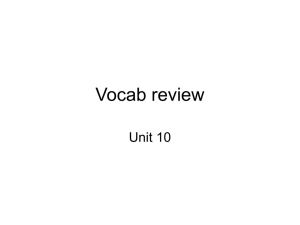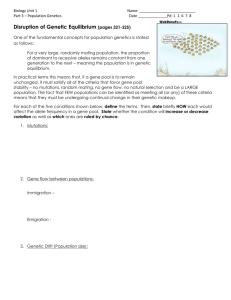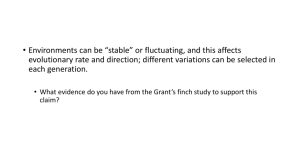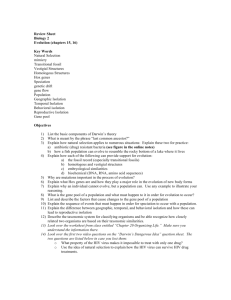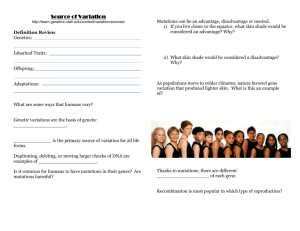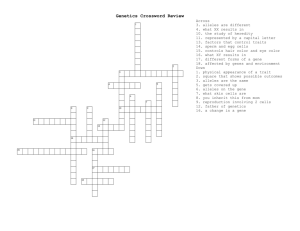Chapter 32 Theories
advertisement
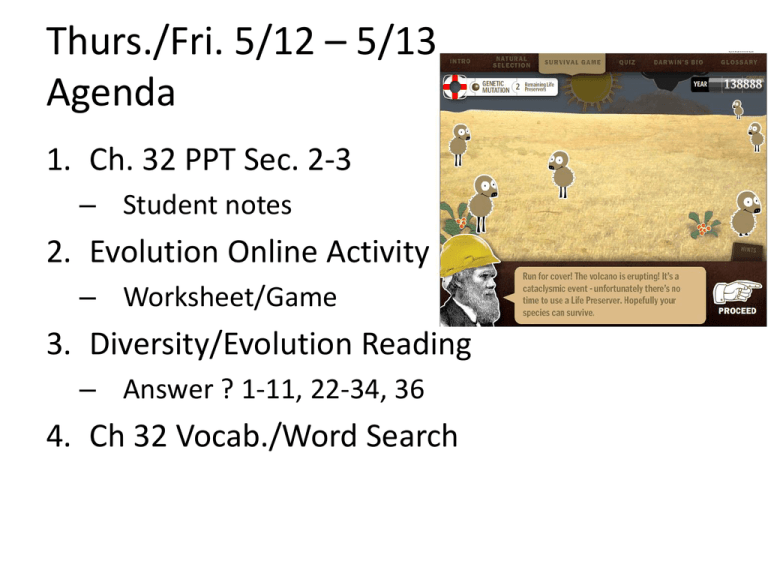
Thurs./Fri. 5/12 – 5/13 Agenda 1. Ch. 32 PPT Sec. 2-3 – Student notes 2. Evolution Online Activity – Worksheet/Game 3. Diversity/Evolution Reading – Answer ? 1-11, 22-34, 36 4. Ch 32 Vocab./Word Search Objectives • Write notes in advanced organizer – Identify and explain 4 factors that cause changes in the gene pool – Explain how isolation influences evolution – Describe 2 theories that explain the rate of evolution • Answer ? From the Diversity/Evolution Reading • Play the online Evolution game and write in their answers on the WKST • Define Key terms Chapter 32 Theories of Evolution Discovery education Video Show video! Evolution & Genetics • Darwin could not explain the causes of variations, or how they were passed on to offspring. • Why do you think Darwin could not explain the causes of variations? – Discoveries in the field of genetics have not been made yet! He did not know about gene mutations! Evolution & Genetics cont. • Today, scientists studying evolution examine variations in a population. • What is a population? – All the members of the same species that live in the same area – Ex: cattle on a farm, tilapia in a stream, Hawaiian Honey Creepers in Waimea Valley Evolution & Genetics cont. • To understand how populations change, scientists look at the kinds and # of genes in a population. • All the genes in a population make up the gene pool which is a collection of all the genes for all the traits in a population. Evolution & Genetics cont. • This gene pool goes back to what we learned about when we did Punnett squares. • Ex: Brown skin is dominant to white skin in wild boars. Determine the genotype and phenotype ratio for a heterozygous female and a heterozygous male. Brown= B White = b Female Bb Male Bb B b B BB Bb b Bb bb Genotype Phenotype 25% Homo. dom. 75% Brown 50% Hetero. 25% White 25% Homo. Rec. Evolution & Genetics cont. • Evolution can only occur when there is a change in the kinds or % of genes in the gene pool of a population. • What causes changes in the gene pool? 1. Natural Selection 2. Mutations 3. Migrations 4. Isolation Natural Selection • Natural selection allows organisms that are well adapted to their environment survive and reproduce. • Other less fit organisms have a lower chance of surviving and reproducing. • Therefore, well-adapted organisms pass on more of their genes to the next generation. • As a result the gene frequency changes from one generation to the next. Peppered Moth Example! Mutations • Mutation is a change in the structure of a gene or chromosome • It adds a new gene to the gene pool. • Because mutations are normally recessive it may remain in the gene pool for many generations without changing the appearance of the population. • Mutations can be helpful or harmful! • Some mutation are neither helpful nor harmful Mutations Migrations • Migration is the movement of members of a species into and out of a population. Isolation • Sometimes, a group of organisms may become isolated from other members of its population. • Geographic isolation: when physical barriers separate 2 populations. – Ex: Rivers, mountains, different islands. Isolation cont. • Geographic isolation often results in speciation, or the development of a new species. Isolation cont. • Geographic isolation reproductive isolation. • Even if the physical barrier is removed organisms from different populations can no longer mate and produce offspring. • Leads to a new species. Rate of Evolution • Most scientists support Darwin’s theory of evolution by natural selection. • Not all agree on how long it takes • Like Darwin’s most scientists believe that evolution is a slow process in which species change gradually over long periods of time (gradualism). Rate of Evolution cont. Rate of Evolution cont. • Some other scientists have proposed that evolution occurs mostly in a series of rapid changes. • In 1972, a theory called punctuated equilibrium was proposed. • Punctuated equilibrium: theory that species remain the same for millions of years, then, within a short period of time, certain species suddenly die off while other species suddenly appear.
